#Monet pond
Explore tagged Tumblr posts
Video
20230807 Mino-Seki 6 by Bong Grit Via Flickr: 関市の板取地区にある、通称「モネの池」。PLフィルター併用で。 @Monet pond, Seki city, Gifu pref. (岐阜県関市板取地区 モネの池)
#Monet pond#Claude Monet#Pond#Water#Carp#Fish#Animal#Nature#Plant#Shinto shrine#Shinto#Shrine#Itadori area#Seki#Gifu#Japan#Nikon#Nikon D850#AF-S NIKKOR 24-70mm F2.8G ED#flickr
18 notes
·
View notes
Text
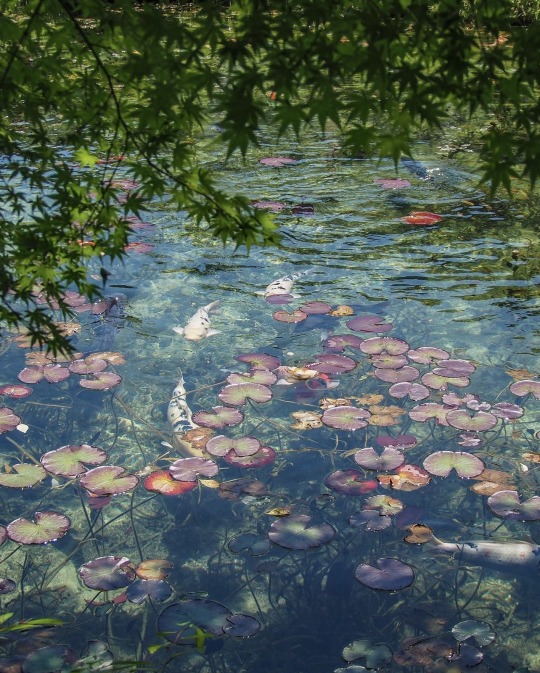
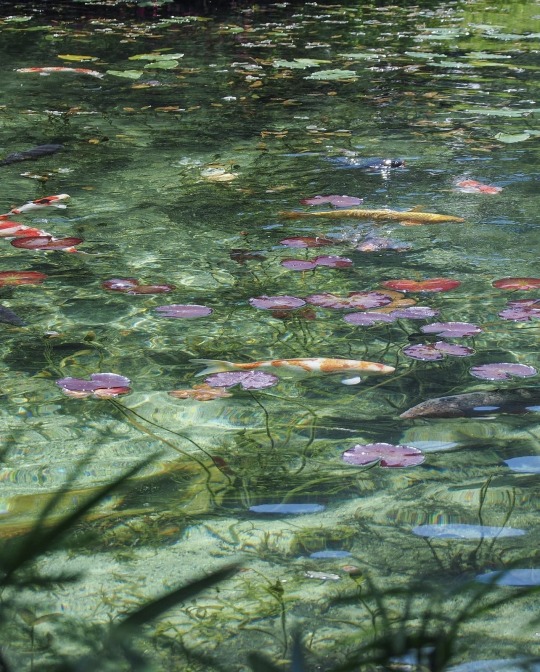
Tomoko M. - 岐阜 モネの池 :: Monet's Pond (2023)
4K notes
·
View notes
Photo

Claude Monet Weeping Willow and Water Lily Pond 1919
485 notes
·
View notes
Text


852 notes
·
View notes
Text

Reflections on the Lake, Homage to Monet - Raffaele Minotto, 2016.
Italian, b.1969 -
Oil on canvas, 110 x 110 cm.
185 notes
·
View notes
Text
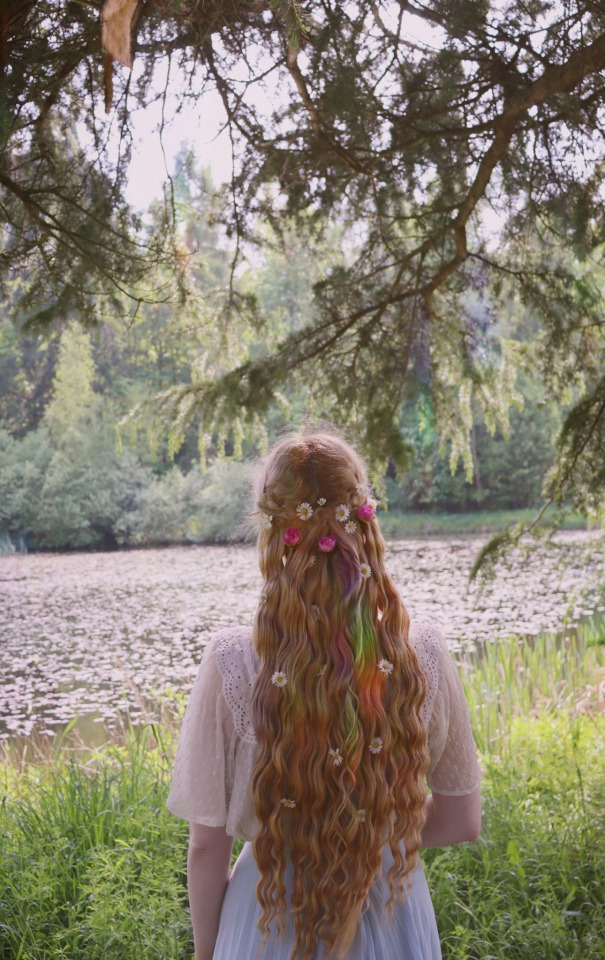

🪷🌿
#cottagecore#cottage core#cottagecore aesthetic#cottagecore style#fairycore#fairy aesthetic#faecore#cottage aesthetic#goblincore#long hair#long hairstyles#naturecore#nature aesthetic#forestcore#flowercore#forest#waterlilies#water lily#claude monet#pre raphaelite#ponds#plants#greenery#green aesthetic#meadowcore#elfcore#fayriequeene
478 notes
·
View notes
Text

#snoopy#Woodstock#Monet#fishing#water lilies#painting#art#art history#bridge over a pond of water lilies#Claud Monet#oil painting
118 notes
·
View notes
Text

The Water-Lily Pond (1899) 🎨 Claude Monet 🏛️ The National Gallery 📍 London, United Kingdom
For Monet, gardens offered a refuge from the modern urban and industrial world, although he and his fellow garden enthusiasts benefited from modern advances in botanical science that were creating new hybrid flowers in a wide choice of shapes and colours that could be produced on an almost industrial scale. He made modest gardens in the homes he rented in Argenteuil and Vetheuil in the 1870s, but from 1883, when he moved to a rented house in Giverny, about 50 miles to the west of Paris, he had more scope to indulge his passion for plants. He became a dedicated gardener with an extensive botanical knowledge, and sought the opinions of leading horticulturalists. As Monet’s career flourished his increasing wealth enabled him to fund what became a grand horticultural enterprise: by the 1890s he was employing as many as eight gardeners.
Monet began by refashioning the garden in front of the house, the so-called ‘Clos Normand’, replacing the existing kitchen garden and orchard with densely planted colourful flower beds that were filled with blooms throughout the seasons. He was able to buy the house in 1890, and three years later he purchased an adjacent plot of land next to the river Epte beyond the railway line at the edge of his property. The plot had a small pond with arrowhead and wild water lilies, which he wanted to turn into a water garden with a larger lily pond ‘both for the pleasure of the eye and for the purpose of having subjects to paint’.
The idea may have occurred to him after he had seen the water garden at the 1899 Exposition Universelle in Paris created by the grower Joseph Bory Latour-Marliac, who bred the first colourful hardy waterlilies. Monet began by requesting permission from the Prefect of the Eure to dig irrigation channels from the Ru – a branch of the Epte – to feed his pond, but the Giverny villagers objected, fearing it would contaminate the water and that the foreign plants would poison their cattle. Monet was furious, but three months later permission came through and he began to enlarge the existing pond, replacing the wild water lilies with Latour-Marliac hybrids available in yellows, pinks, whites and violets.
The pond was enlarged on further occasions – in 1901 and 1904 – tripling the size of the water garden. Together with the flower garden on the other side of the railway track it became the principal preoccupation of the last 26 years of Monet’s life. While the Clos Normand garden was laid out along fairly traditional lines, harking back to the formal French gardens of seventeenth-century Europe, with a central alleyway and geometrically arranged beds, the water garden was more Eastern in inspiration. Its less regimented, more natural design and more muted colours created a quieter, meditative atmosphere. Monet erected a Japanese bridge over the western end of the pond that took its inspiration from the bridges in ukiyo-e Japanese prints. He was a keen collector of these prints and he owned a copy of Hiroshige’s Wisteria at Kameido Tenjin Shrine (1856), one of the many prints that features a curved bridge. In a more general sense, the water garden reflected Monet’s admiration for the Japanese appreciation of nature.
Monet had to wait for his water garden to mature before he could begin to paint it in earnest. As he later recalled: ‘It took me some time to understand my water-lilies. It takes more than a day to get under your skin. And then all at once, I had the revelation – how wonderful my pond was – and reached for my palette. I’ve hardly had any other subject since that moment.’ In total, Monet painted 250 canvases of his water garden. Around 200 of these represent water lilies floating on the surface of the water, while the remainder also show the Japanese bridge, the weeping willow trees and wisteria and the irises, agapanthus and day lilies on its banks. In all these pictures Monet was painting a subject that was already ‘pictorial’ – a landscape that had been carefully composed according to his personal aesthetic. The National Gallery has three further paintings of the water garden :Water-lilies, setting sun; Irises; and Water-lilies.
Monet painted three views of the Japanese bridge in 1895, not long after it had been constructed, but then took a break from the subject, only returning to it in 1899. By now the pool was overhung by vegetation and surrounded by plants, but to judge from contemporary photographs it was never as enclosed as Monet painted it, and he exaggerated the feeling of claustrophobia. In December 1900 he exhibited 12 paintings at Durand-Ruel’s gallery in Paris, all of which showed more or less symmetrical views of the Japanese bridge.
In this painting, as in the others in the series, we are looking down onto the surface of the water, where the lily pads float into the distance, meeting the dense foliage on the far bank. Weeping willows are reflected in the pond and clumps of iris border its banks. The perspective seems to shift so that it is hard to find a single focal point; it is as though we are looking up at the bridge but down on the waterlilies. The picture, like the water itself, seems to oscillate between surface and depth. The mainly vertical reflections provide a counterpoint to the horizontal clumps of the lily pads. Different colours, applied with thick brushstrokes, are placed next to each other. This way of painting has more in common with Monet’s early Impressionist works than his more recent paintings of mornings on the Seine, where he had used softer, more blended strokes to convey hazy atmospheric effects.
The Japanese bridge series marked a turning point in Monet’s art. From now on his subjects were painted from an increasingly confined viewpoint, conveying the sense of an enclosed world. In later paintings of the pond, he would dispense with the banks and bridge altogether to focus solely on the water, the reflections and the water lilies. The culmination of Monet’s water lily paintings were the Grandes Dėcorations, 22 enormous canvases each over two metres high and totalling more than 90 metres in length, which he completed months before his death and donated to the French state. These are now on permanent display in two oval rooms in the Musée de l’Orangerie, Paris.
#The Water-Lily Pond#1899#Claude Monet#The National Gallery#London#United Kingdom#oil painting#painting#oil on canvas#Modern art#Impressionism#french#art#artwork#art history
136 notes
·
View notes
Text

Flowering Arches, Giverny
Claude Monet
oil on canvas, 1913
Phoenix Art Museum
#flowering arches giverny#claude monet#1910s#oil painting#oil on canvas#painting#art#art history#phoenix art museum#garden#flowers#pond#green#orange#pink
26 notes
·
View notes
Video
20230807 Mino-Seki 8 by Bong Grit Via Flickr: なかなかコイがいいところに来なくて結構粘っちゃったよ。 @Monet pond, Seki city, Gifu pref. (岐阜県関市板取地区 モネの池)
#Green#Monet pond#Claude Monet#Pond#Water#Carp#Fish#Animal#Nature#Plant#Nemichi shrine#Shinto shrine#Shinto#Shrine#Itadori area#Seki#Gifu#Japan#Nikon#Nikon D850#AF-S NIKKOR 24-70mm F2.8G ED#flickr
5 notes
·
View notes
Text
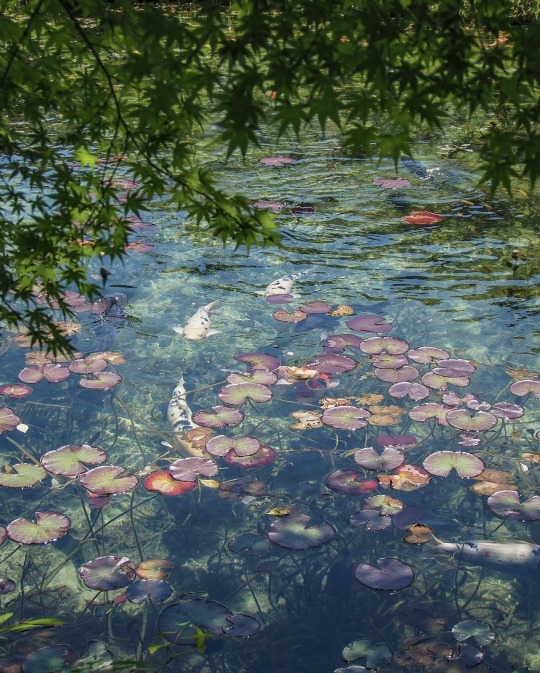


Monet's Pond, Gifu
7K notes
·
View notes
Text

two boats,
Monet's pond, Giverny, France.
#photographers on tumblr#original photography#landscape#color photography#rural#claude monet#monet's garden#monet's pond#giverny#france#frank foster
77 notes
·
View notes
Text

Bridge over a Pond of Water Lilies
Artist: Claude Monet (French, 1840–1926)
Date: 1899
Medium: Oil on canvas
Collection: Metropolitan Museum of Art, New York City, NY, United States
Description
In 1893, Monet, a passionate horticulturist, purchased land with a pond near his property in Giverny, intending to build something "for the pleasure of the eye and also for motifs to paint." The result was his water-lily garden. In 1899, he began a series of eighteen views of the wooden footbridge over the pond, completing twelve paintings, including the present one, that summer. The vertical format of the picture, unusual in this series, gives prominence to the water lilies and their reflections on the pond.
#painting#pond#water lilies#bridge#oil on canvas#french impressionism#impressionist movement#artwork#fine art#trees#giverny#france#french painter#french culture#french art#claude monet#french impressionist painter#european art#19th century painting#metropolitan museum of art
23 notes
·
View notes
Text
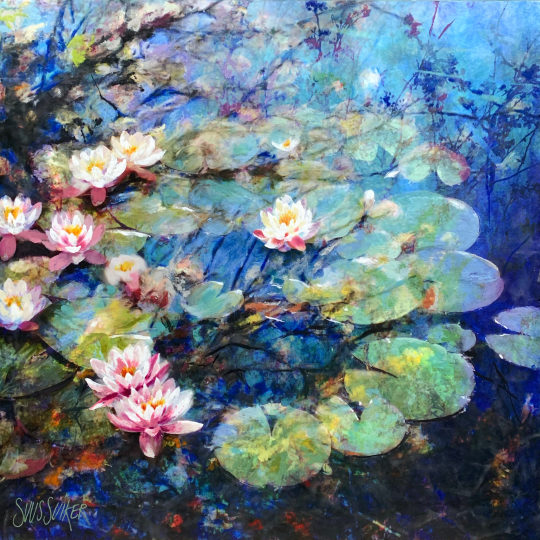
Symbiose 130/24 - Suus Suiker
Dutch , b. 1966 -
Encaustic mixed media on paper on panel , 130 x 130 cm.
252 notes
·
View notes
Text










IMPRESSIONISM 🎨 love, ur local art mom 🩵
disclaimers and more information under the cut ✂️
hi I’m annemarie and I’m an art historian! not adjuncting for the first time in five years was rly hard for me so I threw some slides together so I could still (sort of) teach the same material as my language of art class but a) I threw these slides together for instagram so space was/is limited and b) language of art is a ten week run through art history so I’m presenting only the most accessible information here – there’s so much more to this art period and to this artist! – please don’t expect it to be comprehensive and please do ask if you have any questions!
oh p.s. my first ever class of art history students came up with the name ‘art mom’ for me at the end of the quarter and yes it does make me cry if I think about it too long thanks so much for asking
#annemarie teaches art history#art history#impressionism#impressionist art#impressionist#art#sunrise#claude monet#en plein air#impressionist artists#woman with a parasol#the frog pond#pierre-auguste renoir#impressionist techniques#impasto#women impressionists#mary cassatt#self-portrait#woman with a pearl necklace in a loge#art mom#annemarieyeretzian
28 notes
·
View notes
Text
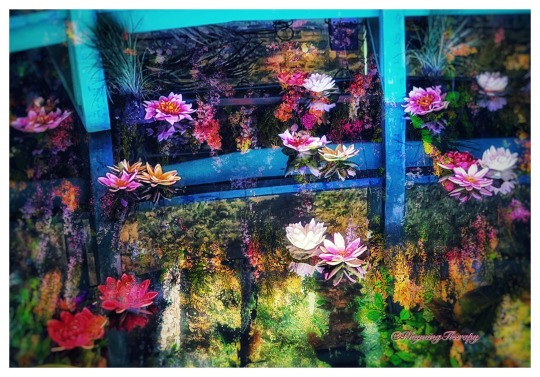
nurturing breathing space
in littoral landscapes
immersed in spontaneous reflections
October’s refuge
from unnatural onslaught
soulcast deep in search of a cure
or—that ever-elusive compromise
sensations immortalised
by the tranquil turquoise waters
of Monet’s pond
.
@RhymingTherapy—October 2023 (digital artwork from my original photos)
#writerscreed#poeticstories#twcpoetry#photographers on tumblr#poets on tumblr#writers on tumblr#poetry#original photography#monet#Monet’s pond#water lilies#reflection#garden#flowers#water#photo art#digital artwork#artists on tumblr#nature#october
294 notes
·
View notes
